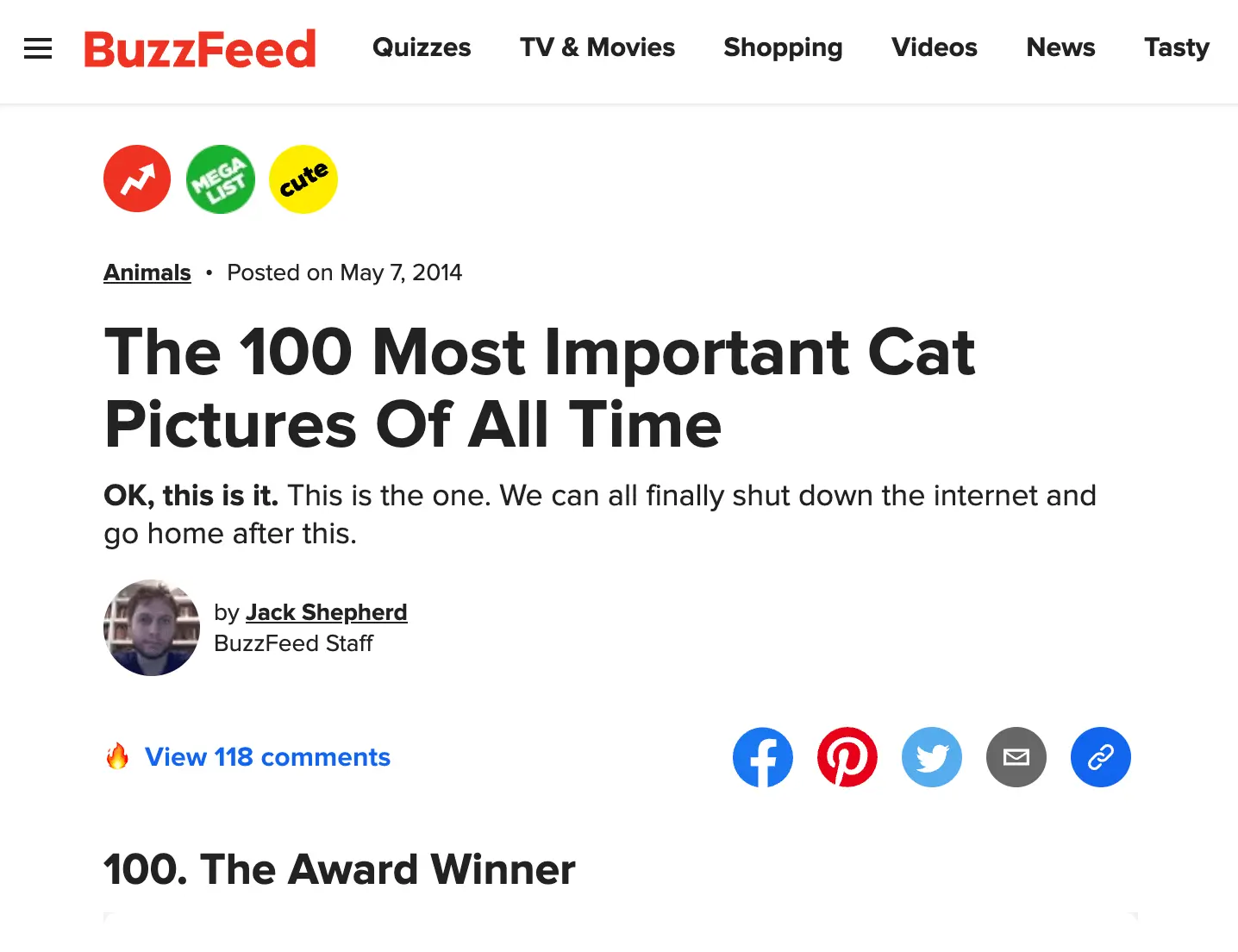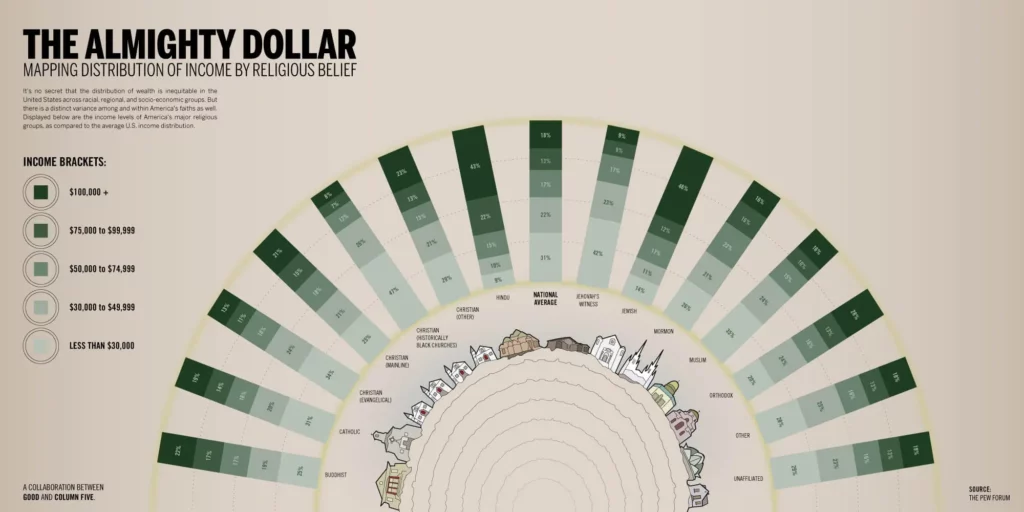If you’re considering a career in digital marketing, researching some of the hottest blogs, videos, guides, and infographics out there can be a great way to get inspired when it’s time to start creating your own.
In this article, we’ve put together some of our favorite digital marketing examples in campaigns in a variety of formats so you can get an idea of what has worked for different brands, companies, and individuals. We’ll also be covering the different types of publishing platforms used by digital marketers and their effectiveness in helping a marketing team reach its overall goals.
- What are the main types of digital marketing content?
- Our favorite digital marketing examples
- Next steps
Let’s get started!
What are the main types of digital marketing content?
Digital marketing campaigns require content—the forms used and how they’re used will depend on the kind of campaign or long-term strategy. We’ve gone over content types in detail in this article, but you can learn more about the most popular types in brief over the following paragraphs.
Blogs
These days, most companies or brands will have a blog as part of their website. A blog is an opportunity to answer commonly asked user questions about products, services, or the industry in general, as well as rank for similar search queries on search engine results pages (SERPs). Sometimes blogs cover company and industry news, user success stories, or discuss newly released products or features.
Interviews may also be featured—either with satisfied customers, company employees, or other related figures. Although the goals of a blog can vary slightly, generally blogs are used to help a site rank on search engine results pages, build brand authority, instill user trust, and promote services or products.
Listicles
A listicle is simply an article or blog post which contains a numbered list. The subject matter will depend entirely on the goals and content of the site, but some recognizable examples of listicle titles might include: “10 signs he’s going to propose soon”, “5 ways to beat the January blues,” or “23 films which inspired Stranger Things.”
The common thread between all of them is that they contain a number at the start of the title, signaling to the reader that the post will contain an easy to read list related to the title. As well as being produced for readability, listicles are also very shareable, are hugely popular among audiences, and easy to write, making them a common choice for digital marketing content creators.
Ebooks
The production and dissemination of electronic books—otherwise known as ebooks—are great opportunities for an organization to offer website visitors a product of significant value for free. These downloadable (and usually free) products are where company insiders and subject matter experts can prove the company’s industry expertise, dig into products or features, answer commonly-asked user questions at length, and assist users in overcoming specific challenges.
The main difference between an ebook and other types of text content is its length and detail. Intended as a longer read, ebooks can be many pages long but—if marketed correctly—users will be interested in reading and rereading segments of an ebook in order to get full value out of it.
From a practical standpoint, an ebook gives the content marketing team a chance to repurpose older blog content that may not be getting as much traffic as they used to. Rather than letting this blog content go to waste it can be refreshed, updated, and extended for use in an ebook.
In addition, an ebook is a proven method of obtaining leads. Although the content itself is free, a user is usually required to provide an email address or submit a short survey in order to get their copy. This information is invaluable to content marketers, who can use it in future email marketing campaigns.
Infographics
An infographic is typically a highly stylized, eye-catching collection of graphics or illustrations which are used to represent specific data points that are relevant to a company’s customer base. The graphics might take the form of pie-charts, graphs, or simply numbers accompanied by nice images and some text.
Infographics help users to understand what can be complex concepts or pieces of information in a format that can be easily digested and understood. Although less frequently used now that at their peak in the mid-2010s, the value of infographics should not be dismissed. This engaging content type is still a highly-effective way of sharing knowledge fast to large groups of users.
Video
Watching videos is becoming one of the most popular methods of consuming content online thanks to the rise of video platforms such as TikTok and YouTube. Due to its increasing prominence as a digital marketing content tool, an increasing number of companies are using video to speak directly to their customers and tell stories about their brands. Video content can vary widely, ranging from animation to live video, webinars, educational films, or interviews.
The format can be used for troubleshooting common user issues, demonstrating new products, teaching or mentoring, or simply bringing a more human touch to a company’s content channels.
There are now endless options for publishing video, with the most common being social media platforms like YouTube, Snapchat, TikTok, Instagram, and Twitter. These platforms enable ease of sharing, commenting, and liking which can boost a video’s visibility to a wider audience and increase its chances of going viral.
Our favorite digital marketing examples
Are you ready to get inspired? Check out these creative digital marketing examples of campaigns using blogs, ebooks, video, infographics, and listicles which captured the imagination of audiences, built loyal user followings, and engaged new customers.
Video: The Last Mile, Johannes Leonardo, Volkswagen, 2021
Iconic car manufacturer, Volkswagen, commissioned the elegant and moving campaign, The Last Mile, when it finally said goodbye to one of its most recognized car models of all time—the Beetle—in an animation that celebrated the impact of the car throughout the last century.
To mark more than eighty years of the Beetle, the car maker published a 90-second animated film that followed a young man’s journey with the car—from learning to drive, first dates, children, family life, and old age. The car then takes its ‘last mile’ past some of the Beetle’s biggest fans both now and throughout the decades—from Andy Warhol and Kevin Bacon to protest groups and world travelers, all of whom contributed to its cult status. The video is set to the song Let it Be by the Beatles, sung by the Pro Musica Youth Chorus, and audiences watch as fans of the car wave goodbye to it as it takes its final journey.
Although the film played a central role in the campaign, additional components consisted of:
- Beetle influencers sharing their story of the car on social media, using the hashtag #TheLastMile
- Volkswagen taking over Times Square in New York City on New Year’s Eve that year.
Listicle: BuzzFeed’s regular, definitive, and framework list posts!
If you’ve not read a BuzzFeed listicle, where have you been?! BuzzFeed has become one of the most shared websites of all time thanks to its hilarious, on-trend, lighthearted—but very much on-point—list posts, otherwise known as listicles. As well as ensuring all content is hyper-localized to cater to its international community, BuzzFeed also punctuates its list posts with apt and very shareable gifs, which further bolster the mood of its pieces.
BuzzFeed is also the king of diversity. Although it’s become famous for community-driven content, quizzes, and more click-baity headlines, it also covers serious topics from politics to mental health in its articles and listicles, meeting its users’ wide-range of content needs using a style and format that is bite-sized and easy to read.
When it comes to listicles, it’s interesting to note that BuzzFeed has three formats that it regularly recycles:
The Listicle
The standard BuzzFeed listicle is characterized by a numbered list of things punctuated by relevant images and captions. Unlike other posts, there is typically no narrative driving the post, and it’s not even claiming to be the best of that kind of list—it is simply a list.
Some examples of BuzzFeed’s regular listicle titles include:
- 30 Inexpensive And Useful Products To Help You Get Through The Week
- 50 Things You Might Not Know About Sofia Coppola And Her Movies
- 18 Famous Songs You Didn’t Know Were Written By Other Famous People
The Definitive List
BuzzFeed’s definite list-style post varies slightly from their standard list article in that it aims to be the best (or ‘only’) list for that particular topic or theme, providing an exhaustive list for readers. These listicles are typically much more detailed and researched than regular list articles.
Some examples include:
- 15 Things You Have To Do In Istanbul, Turkey
- 101 Glorious Moments From The Golden Age Of Cinema
- The 100 Most Important Cat Pictures Of All Time

The Framework List
The third most frequently-used list format that BuzzFeed utilizes is the framework list. Usually addressing the reader directly, and organized around a very specific theme or narrative, in this kind of post, the number of items on the list comes second to a compelling story.
Some examples include:
Infographic: The Almighty Dollar, Column Five Media and GOOD Magazine, 2017
While infographics can be used to share information on any number of topics from the frivolous to the scientific, The Almighty Dollar campaign created by Column Five Media in collaboration with GOOD Magazine used an infographic to spark debate around the rather serious topic of income disparity among religious faiths in America. What they proved with their infographic is not only how visually stunning this format can be, but also how clearly and succinctly it can communicate detailed and hard-to-digest information.

Sourcing their data from research by the Pew Forum, the illustration uses a muted color palette, with dark and light greens indicating income brackets. Underneath these, there are small illustrations of different religious buildings, used to visually represent the religions that the statistics refer to. Organized in a half-circle formation, the statistics catch the eye due to their unique arrangement. The green color palette is also a nod to the color of the American dollar.
The illustration demonstrates clearly the stark differences in income between the various religious groups in the U.S. (as well as compared to the national average) and does so in way that these statistics can be seen and understood without the need for lengthy text explanations.
Blog: Greatist, 2011-ongoing
Founded in 2011, Greatist is a wellness, fitness, food, nutrition, and health blog with a difference. In a sea of misinformation, Greatist insists on having all of their content checked from medical professionals to ensure absolute accuracy, with their experts conducting a robust review process on each article before publishing. When new information becomes available (or the science is updated) so too are Greatist’s articles. For millennials overwhelmed with contradictory advice on how to live healthy lives, Greatist’s science-backed health and fitness articles are a revelation.
While they may look like a standard fitness and health blog, Greatist’s approach to editorial accuracy has brought them a wealth of loyal followers with over ten million visitors per month. The company makes its income through advertising and by selling sponsored content without compromising its stance on wellness content that has the scientific stamp of approval.
By focusing on trust-building in this way, the site has clearly found a niche market where other health sites have failed: young people seeking accurate and honest information they can rely on.
Other plus points worth noting include:
- User-friendly headlines (without being clickbaity or overwhelming). Eg., Don’t Scoff at Sardines — These Little Beauties Are Nutritional Badasses
- Inclusive images, illustrations, and language
- Simple, yet eye-catching design
Next steps
We hope you’ve enjoyed this rundown of some of our favorite digital marketing examples of campaigns utilizing blog content, listicles, infographics, video, and more. If you’re thinking about launching a new career in digital marketing, now would be a good time to consider concepting a simple campaign that uses one (or more) of these formats.
You’ll need to make a note of your…:
- Audience
- Product
- Campaign message
- Ideal format
- End goal
- Content creators
- Timeline
- Budget
Can you think of ways to use different publishing platforms simultaneously, or how you might use social media to further push your message? The more practice you can get concepting or even publishing digital marketing campaigns the more you’ll have to demonstrate to employers at job interviews or contribute to a course when you’re ready to start your new career.
Ready to learn more? Check out our free, self-paced, digital marketing short course now!
You may also be interested in the following articles:
